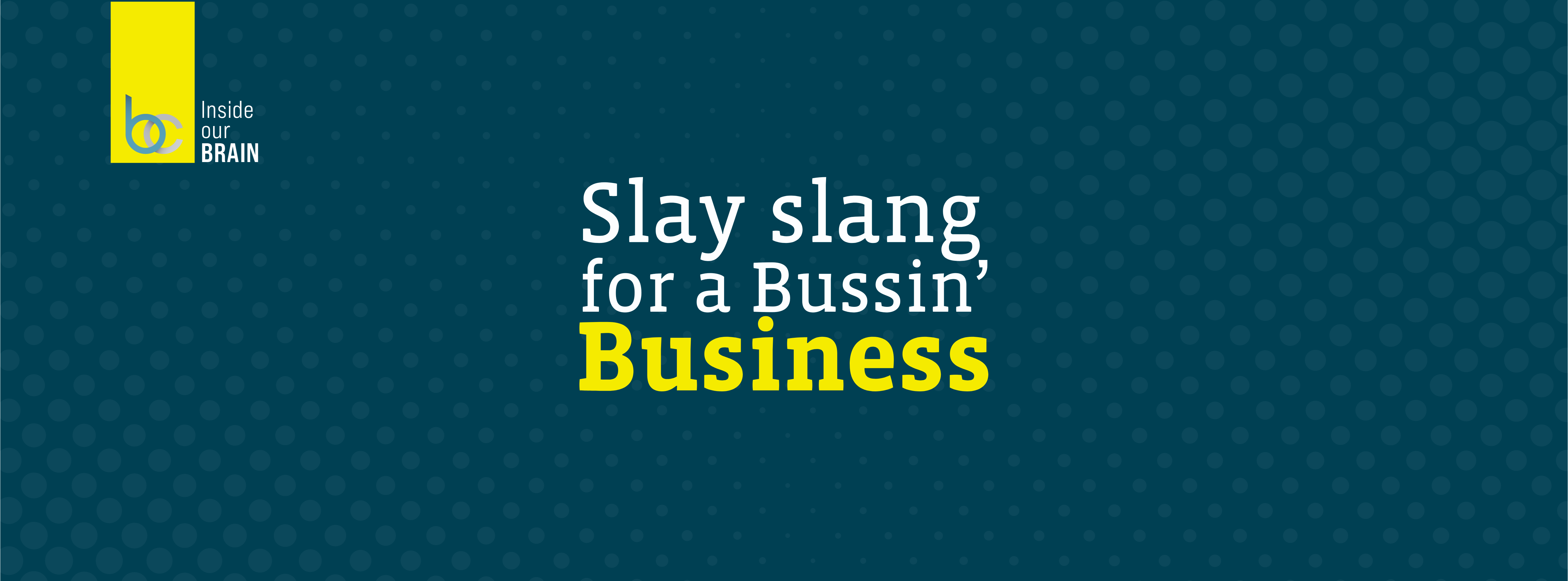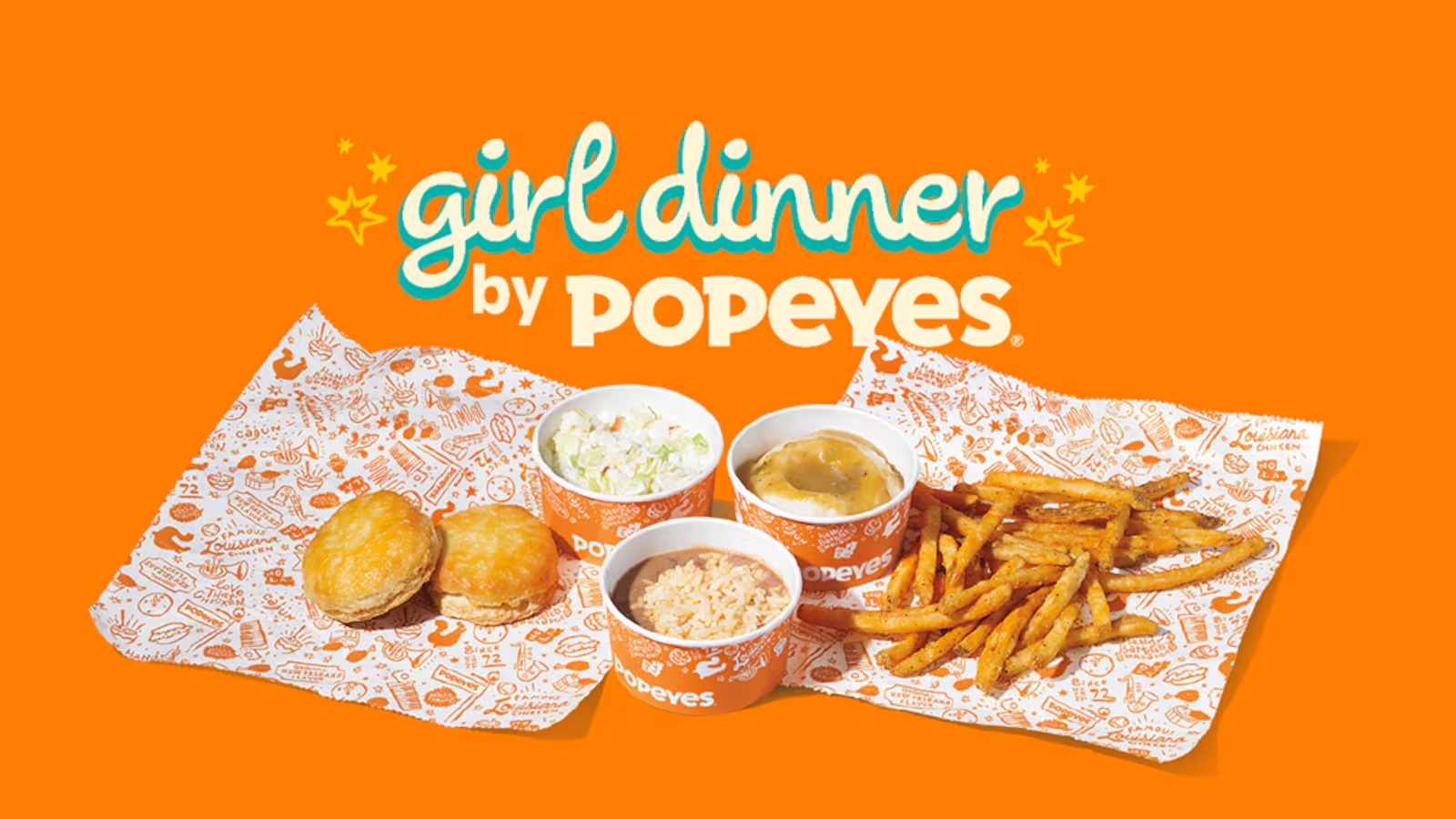
The Benefits of Using Slang in Marketing
Slang has been around for generations and generations. But these days, it’s evolving faster than you can say “trendsetter,” and if you want to stay #relevant in today’s marketing game, understanding these terms is key. In fact, PubMed (yes, even medical folk agree) found that companies that target younger demographics and incorporate slang into their marketing campaigns saw a significant increase in audience engagement.
Understanding your audience’s language is the cornerstone of successful marketing. Staying in tune with their evolving language is crucial. By incorporating their slang into your campaigns, you’re not just speaking their lingo but you’re showing that you understand and value them. This can create a powerful connection, making them more likely to engage and purchase from your business, leading to increased sales and brand loyalty!!
Using slang will also differentiate your business. In our crowded marketplace, standing out is the name of the game. Incorporating the use of slang in a campaign can help your brand become easily remembered, giving it a more distinctive voice and tone. Setting you apart from competitors, giving you a competitive edge and gives your business that main character energy.
Slang also increases your probability of going viral. As we know, slang is shared through word-of-mouth, AKA social media, in today’s world. Social media allows word-of-mouth to spread more quickly, especially if they go viral. So, ensuring your business stays updated with the terms will increase its virality (and yes, “virality” totally counts as a word); since it will be shared more, the algorithms will show your campaign more, thus increasing your visibility. We can look at a recent viral meme, “brat summer,” which started from British singer Charli XCX’s new album Brat. The singer tweeted using “brat,” which got 30 million views in just 16 hours, and now the term has evolved and has become a huge new meme with the hashtag “brat” having over 1.2 million posts on TikTok. People are now using the term to describe the summer, saying it’s a “brat summer” or an iconic summer. I guess we can say that tweet was a brat, AKA the tweet of the summer.
Lastly, using slang in a campaign can benefit your business by making a fire campaign that is more authentic and relatable. In a world where technology is advancing rapidly, consumers are searching for genuine and relatable companies. At Barker & Christol, we pride ourselves on being as authentic as possible and always seek close, personable relationships with our clients. We always #keepitreal. By incorporating slang, your business can also be more genuine, resonating with the consumer of the content and reinforcing your brand’s authenticity.

Gen Z Slang
| Word | Definition | Example of Use |
| Aura points | Typically phrased as + or – aura points. This means gaining aura points if you did something cool or losing aura points if you didn’t do something uncool. Typically phrased as a question or a statement stating the amount of points earned or lost. | Ex: “How many aura points did I gain from running a successful campaign?”orEx: “+1000 aura points for having a consistent brand.” |
| Very demure | A phrase that is typically framed as “See how _____ ?Very cutesy, very mindful, very demure”. Can refer to anything about being modest, thoughtful, or reserved. | Ex: “See how I brought coffee for my coworkers? Very cutesy, very mindful, very demure” or“See how I come to work? Very demure. See how I look professional? Very cutesy, very mindful, very demure” |
| Brat | Refers to someone has being“that girl,” iconic, or 100% honest with themself. But it can also refer to something being iconic. Typically phrased as “someone IS brat” or “someone is so brat” or “a brat noun.” | Ex: “A brat internship”Or“Barker& Christol IS brat” |
| Slay | An expression of approval, usually of someone’s appearance or actions. | Ex: “Slay! Our sales are skyrocketing!” |
| Bussin | Refers to something good and usually refers to food. | Ex: “Today’s team lunch was so good! The food was bussin.” |
| Gas | Refers to something good. | Ex: “This new signage design is so gas!” |
| Pop off | Expresses excitement or positivity in the form of a compliment. Used to describe something going above and beyond. | Ex: “You popped off today. You got all of your work done and even got started on tomorrow’s workload.” |
| Delulu | Short for “delusional” but used more humorously. Usually, it refers to when someone rejects reality in favor of a more appealing interpretation. | Ex: “My boss told me good work today. I think I am his favorite employee.” “You are so delulu. You just started working there; he was just nice to you.” |
| Red/Green/Beige Flags | Red Flag: something negativeGreen Flag: something positiveBeige Flag: somewhere in between red and green flags. Not really negative or positive; just a little silly or strange. | Ex: “My red flag is that my desk is so messy, I can loose important documents. My green flag is I keep the important documents on a file. My beige flag is that when I sit down in my desk chair I like to spin around.” |
| Eats/ate | Used as a compliment and something that is cool. | Ex: “That new signage for the building absolutely eats”Ex: “The video ad ate. It was perfection.” |
| Era | Recently became popular by Taylor Swift’s style change between her different albums or “eras”. Refers to a specific period of time in someones life. | Ex: “I’m in my girl boss era.”Ex: “I’m in my networking era.” |
| Fire | Something good, cool, or fun. | Ex: “This design is so fire!! I love it!” |
| Girl dinner | This refers to when most women describe a random arrangement of snacks and foods as a meal. | Ex: “I don’t have anything in my pantry. I will just eat crackers, yogurt, and pickles. Girl dinner!” |
| Tea | The drama or gossip. | Ex: “I overheard John likes our other co-worker Amanda.” “Omg TEA!” or “That’s tea.” |
| Sus | Short for suspicious | Ex: “They told me they would call me last week, but they still haven’t. That is so sus.” |
| Lowkey | Used to mean “kind of” | Ex: “I lowkey love our new office space!” |
How Slang Can Be Used in Marketing
Slang isn’t just for the cool kids to yap about; it’s the secret ingredient for boosting your marketing impact, especially for the younger crowd. When determining which term to use in an advertisement or campaign, it is important to consider your demographics and geographics. Matching the right slang to your product or service can make all the difference in crafting a compelling campaign. You need to make sure your audience vibes with your vibe.

For instance, Popeyes had a successful campaign in 2023, when the term “girl dinner” first became popular. Popeye’s took that phrase and ran with it, launching a limited-edited menu item called “Girl Dinner,” featuring all their mouthwatering sides. This savvy move sparked a social media buzz and drove up sales, proving how much trendy slang amp up sales and social media engagement, leading to a good marketing strategy.
The ‘Red Flags’ of Slang
With everything, including slang, authenticity is key. It’s important to recognize while slang can be good, it can also be bad if used too much. There is a fine line between cool and cringey. It’s essential to use slang carefully and authentically. Misusing or overusing slang can come across as forced or insincere, potentially alienating your audience instead of engaging them. Basically, overusing slang in your campaign will lead it to, well… #flop. This is why you want to utilize your wording and not send out bad vibes about your brand. Remember, authenticity is the key to effectively using slang, making your communication more genuine and relatable.
At the end of the day, you want your campaign to pop off and not come across as a red flag. Understanding your audience and the cultural context of your slang is crucial for a successful marketing campaign. This means knowing the slang words and understanding how they are used and the cultural references they imply.
How to Stay Current in the Future
Staying current with popular trends and slang can be crucial for marketing business, especially targeting younger generations. It can be tricky to stay current with all the new and evolving trends. The easiest way to stay on top of it is to follow other big and popular accounts on all social media platforms that you see as beneficial to your brand. For example, if you target someone who would use Facebook, you should look for trends on Facebook. You can also look at the most popular hashtags on all platforms. This can inform you about a current popular trend or famous sayings.
If all else fails and you are feeling stuck, don’t worry; just hit us up at barker-christol.com! We can be your trend whisperer and can keep you slaying!